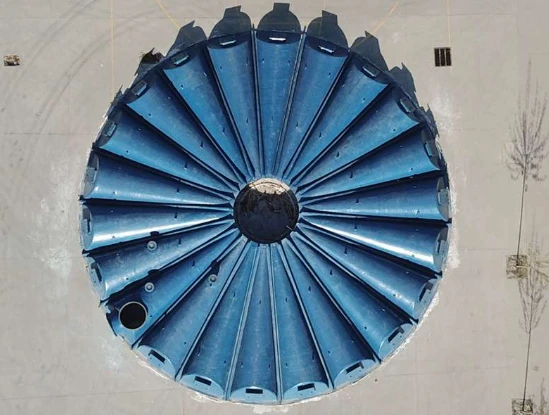
-
 Afrikaans
Afrikaans -
 Albanian
Albanian -
 Amharic
Amharic -
 Arabic
Arabic -
 Armenian
Armenian -
 Azerbaijani
Azerbaijani -
 Basque
Basque -
 Belarusian
Belarusian -
 Bengali
Bengali -
 Bosnian
Bosnian -
 Bulgarian
Bulgarian -
 Catalan
Catalan -
 Cebuano
Cebuano -
 China
China -
 China (Taiwan)
China (Taiwan) -
 Corsican
Corsican -
 Croatian
Croatian -
 Czech
Czech -
 Danish
Danish -
 Dutch
Dutch -
 English
English -
 Esperanto
Esperanto -
 Estonian
Estonian -
 Finnish
Finnish -
 French
French -
 Frisian
Frisian -
 Galician
Galician -
 Georgian
Georgian -
 German
German -
 Greek
Greek -
 Gujarati
Gujarati -
 Haitian Creole
Haitian Creole -
 hausa
hausa -
 hawaiian
hawaiian -
 Hebrew
Hebrew -
 Hindi
Hindi -
 Miao
Miao -
 Hungarian
Hungarian -
 Icelandic
Icelandic -
 igbo
igbo -
 Indonesian
Indonesian -
 irish
irish -
 Italian
Italian -
 Japanese
Japanese -
 Javanese
Javanese -
 Kannada
Kannada -
 kazakh
kazakh -
 Khmer
Khmer -
 Rwandese
Rwandese -
 Korean
Korean -
 Kurdish
Kurdish -
 Kyrgyz
Kyrgyz -
 Lao
Lao -
 Latin
Latin -
 Latvian
Latvian -
 Lithuanian
Lithuanian -
 Luxembourgish
Luxembourgish -
 Macedonian
Macedonian -
 Malgashi
Malgashi -
 Malay
Malay -
 Malayalam
Malayalam -
 Maltese
Maltese -
 Maori
Maori -
 Marathi
Marathi -
 Mongolian
Mongolian -
 Myanmar
Myanmar -
 Nepali
Nepali -
 Norwegian
Norwegian -
 Norwegian
Norwegian -
 Occitan
Occitan -
 Pashto
Pashto -
 Persian
Persian -
 Polish
Polish -
 Portuguese
Portuguese -
 Punjabi
Punjabi -
 Romanian
Romanian -
 Russian
Russian -
 Samoan
Samoan -
 Scottish Gaelic
Scottish Gaelic -
 Serbian
Serbian -
 Sesotho
Sesotho -
 Shona
Shona -
 Sindhi
Sindhi -
 Sinhala
Sinhala -
 Slovak
Slovak -
 Slovenian
Slovenian -
 Somali
Somali -
 Spanish
Spanish -
 Sundanese
Sundanese -
 Swahili
Swahili -
 Swedish
Swedish -
 Tagalog
Tagalog -
 Tajik
Tajik -
 Tamil
Tamil -
 Tatar
Tatar -
 Telugu
Telugu -
 Thai
Thai -
 Turkish
Turkish -
 Turkmen
Turkmen -
 Ukrainian
Ukrainian -
 Urdu
Urdu -
 Uighur
Uighur -
 Uzbek
Uzbek -
 Vietnamese
Vietnamese -
 Welsh
Welsh -
 Bantu
Bantu -
 Yiddish
Yiddish -
 Yoruba
Yoruba -
 Zulu
Zulu
fiberglass ducts demonstrate exceptional resistance against
Exceptional Resistance of Fiberglass Ducts
Fiberglass ducts have steadily gained popularity in the construction and HVAC (heating, ventilation, and air conditioning) industries due to their exceptional resistance against various environmental and operational challenges. With the increasing demand for energy-efficient and durable materials, fiberglass offers an array of benefits that make it a superior choice for ductwork systems. This article will explore the numerous advantages of fiberglass ducts, focusing on their resistance to corrosion, thermal management, fire, and installation flexibility.
Corrosion Resistance
One of the most significant advantages of fiberglass ducts is their remarkable resistance to corrosion. Conventional duct materials, such as metal, can suffer from rust and degradation when exposed to moisture and a variety of chemicals. In contrast, fiberglass is inherently resistant to these issues, which stems from its composition. Made from a combination of glass fibers and synthetic resins, fiberglass ducts do not corrode, reducing the likelihood of mold growth and the release of harmful particles into the air. This characteristic is particularly important in industries such as food processing, pharmaceuticals, and chemical manufacturing, where air quality and hygiene are paramount.
Thermal Efficiency
Fiberglass ducts are also lauded for their excellent thermal insulation properties. The material is a poor conductor of heat, which means it minimizes heat loss or gain during the transportation of heated or cooled air. This thermal efficiency can lead to lower energy bills and a reduced carbon footprint, making it an environmentally friendly choice. In a world increasingly focused on sustainability, fiberglass ducts stand out as a responsible solution for managing energy in commercial and residential buildings alike.
Fire Resistance
fiberglass ducts demonstrate exceptional resistance against

While it might be surprising to some, fiberglass ducts possess inherent fire resistance. The core material does not support combustion, and many manufacturers enhance this property by treating the ducts with additional fire-retardant agents. In the event of a fire, the use of fiberglass ducts can help contain the spread of flames and smoke, offering crucial time for occupants to evacuate and for emergency responders to tackle the situation. This fire safety feature is especially valuable in high-rise buildings, hospitals, and places of assembly, where tight regulations and safety protocols dictate the use of non-combustible materials.
Installation Flexibility
Another attractive aspect of fiberglass ducts is their versatility in installation. Unlike heavier metal ducts, fiberglass is lightweight and easy to handle, significantly reducing labor costs and installation time. The flexibility of fiberglass also allows for more intricate designs and layouts, enabling contractors to navigate around obstacles more easily. This adaptability is particularly beneficial in retrofitting projects, where existing structures pose challenges to traditional ductwork installation. Fiberglass ducts can be custom-manufactured to fit a variety of applications, ensuring optimal performance no matter the configuration.
Conclusion
In conclusion, fiberglass ducts demonstrate exceptional resistance against numerous challenges characterized by corrosion, thermal inefficiencies, fire hazards, and installation complexities. As the HVAC industry evolves to meet the growing demands for sustainable and efficient solutions, fiberglass ducts emerge as a prominent choice for building systems. Their impressive durability and resistance properties not only ensure a long-lasting product but also contribute to a healthier and safer indoor environment.
Investing in fiberglass duct systems means choosing a reliable option that aligns with both current building codes and the future of energy-efficient HVAC solutions. As we continue to push for innovative materials in construction and engineering, fiberglass ducts certainly hold a prominent place in shaping our built environment for years to come.









